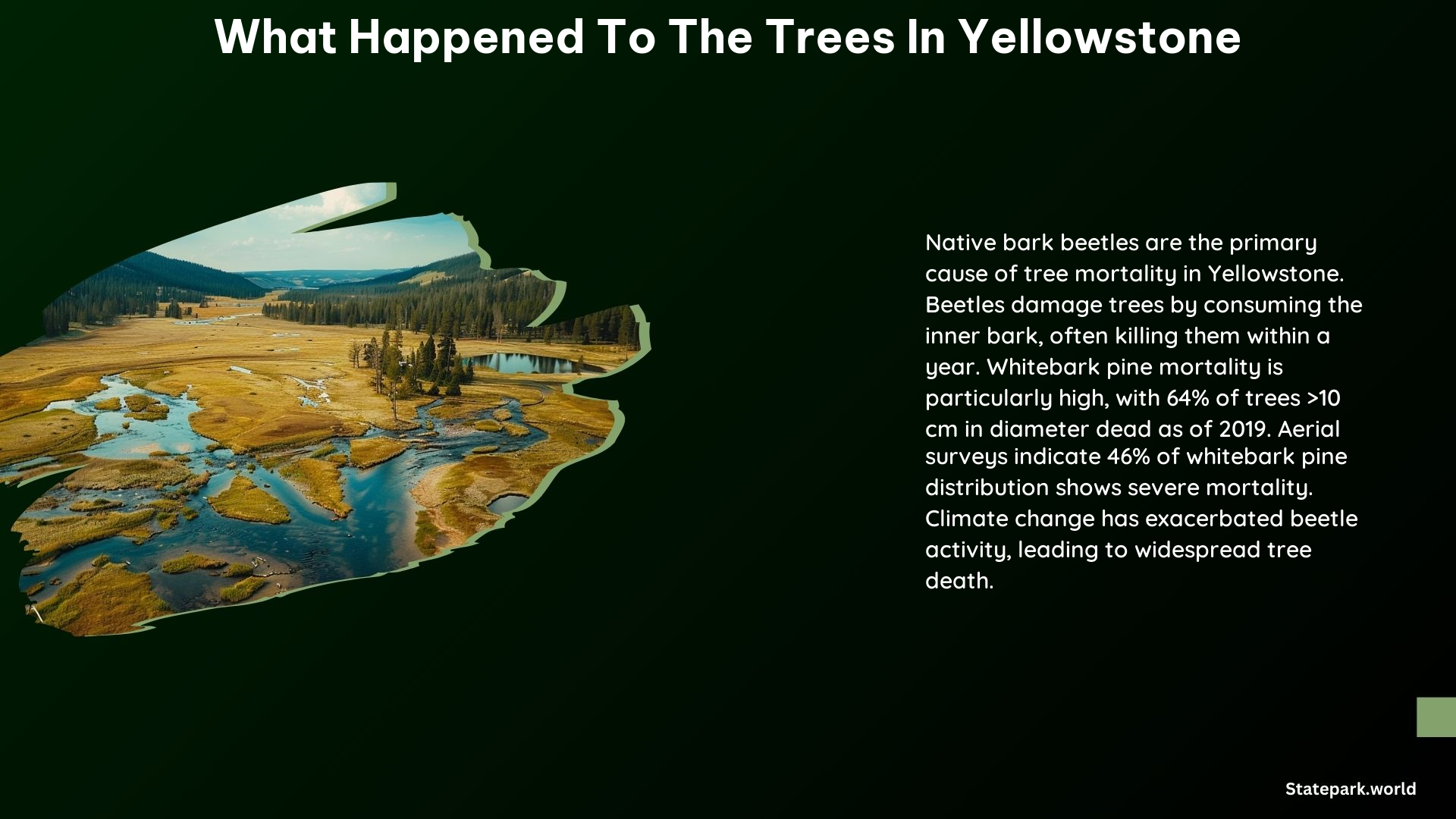The trees in Yellowstone National Park have been severely impacted by a combination of factors, primarily the mountain pine beetle infestation and climate change. The iconic forests of the park have been undergoing a dramatic transformation, with widespread tree mortality affecting the ecosystem.
Mountain Pine Beetle Infestation
The primary cause of tree mortality in Yellowstone is the native mountain pine beetle. These tiny insects have been wreaking havoc on the park’s forests, particularly the whitebark pine trees. The beetles bore into the inner bark of the trees, disrupting the flow of nutrients and ultimately killing the tree.
The mountain pine beetle outbreak has been exacerbated by climate change, as warmer temperatures have allowed the beetles to thrive in areas that were previously inhospitable. This has led to the beetles spreading to new regions, decimating previously unaffected forests.
Whitebark Pine Decline

The whitebark pine, a high-elevation tree species that is a crucial food source for grizzly bears and other wildlife, has been hit particularly hard by the mountain pine beetle infestation. By 2015, it was estimated that 26% of whitebark pine trees taller than 1.4 meters had died, with nearly half of the Greater Yellowstone Ecosystem showing severe mortality.
The loss of these trees has significant ecological implications, as they play a vital role in the park’s ecosystem. Grizzly bears, for example, rely on the nutrient-rich whitebark pine nuts as a crucial food source, especially before hibernation. The decline of these trees has forced the bears to search for alternative food sources, which can lead to increased human-bear conflicts.
Climate Change
Climate change has been a major contributing factor to the tree mortality in Yellowstone. Warmer temperatures have allowed the mountain pine beetle to thrive in areas that were previously too cold for the insects to survive. This has led to the beetles spreading to new regions, decimating forests that were once thought to be safe from their onslaught.
In addition to the direct impact of the mountain pine beetle, climate change has also affected the trees in other ways. Prolonged droughts and changes in precipitation patterns have stressed the trees, making them more vulnerable to disease and insect infestations.
Conservation Efforts
In response to the tree mortality crisis in Yellowstone, researchers and conservation organizations have been working to develop strategies to protect and restore the park’s forests. One approach is to breed trees that are resistant to drought and blister rust, another affliction affecting whitebark pines.
However, these efforts face significant challenges, particularly due to the wilderness status and national park boundaries that limit the ability to actively manage the forests. Replanting efforts are also hampered by the remote and rugged terrain of the park.
Despite these challenges, the conservation community remains committed to finding ways to preserve the iconic forests of Yellowstone National Park. The long-term recovery of these ecosystems will require a multi-faceted approach that addresses both the immediate threats and the underlying drivers of change.
Conclusion
The trees in Yellowstone National Park have been facing a perfect storm of threats, with the mountain pine beetle infestation and climate change working in tandem to decimate the park’s forests. The loss of these trees has significant ecological implications, and the conservation efforts to protect and restore the forests face significant challenges.
As visitors to Yellowstone, it’s important to be aware of the changes happening in the park and to support the efforts to preserve its natural wonders. By understanding the threats facing the trees and the ongoing conservation work, we can all play a role in ensuring that Yellowstone’s forests remain a vibrant and resilient part of this iconic national park.
